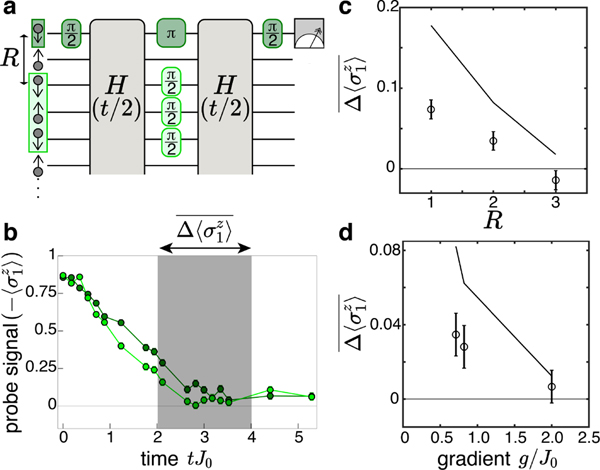FIG. 3.
DEER Protocol. a, In the spin-echo procedure (dark green), a single probe spin undergoes a spin-echo sequence, while the rest of the spins experience normal evolution under H for total time t. In the DEER procedure (dark and light green), there are additional perturbing π/2 pulses on a region, here fixed at a size of three spins, that is R spins away. The difference in the probe magnetization following these procedures reflects the ability of the DEER region to influence the dynamics at the probe spin. We study this protocol using an initial Neel state (N = 15). b, At intermediate times, before the spin-echo signal approaches zero due to decoherence, a difference develops between the spin-echo (dark green) and DEER (light green) signals. We quantify this by taking the average difference (DEER-spin echo) between tJ0 = 2 and 4 (shaded region) after imbalance dynamics have stabilized. These data are for R = 1 and g/J0 = 0.71. c, As R is increased (at g/J0 = 0.71), the difference signal drops to zero, reflecting the incomplete spread of correlations through the system at finite time. d, As g is increased (at R = 2), the difference signal also decreases with increasing gradient, consistent with the expectation that within the Stark MBL phase, increasing localization leads to progressively slower development of correlations. Points in c. and d. are the experimental data, and solid lines are exact numerics.

